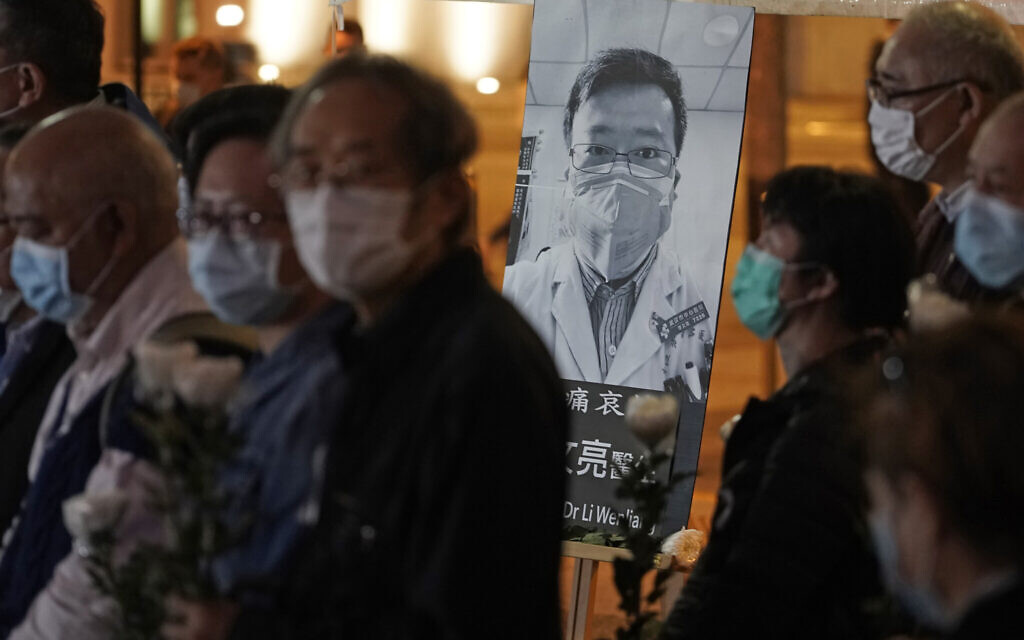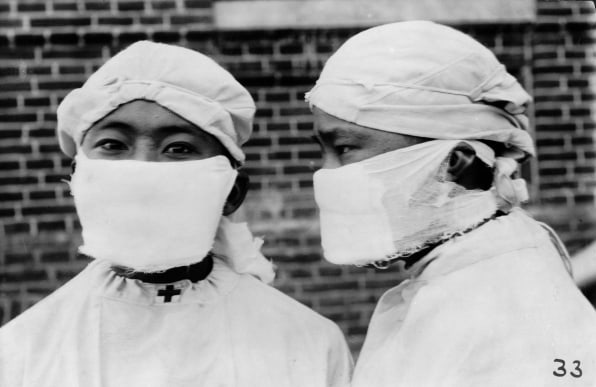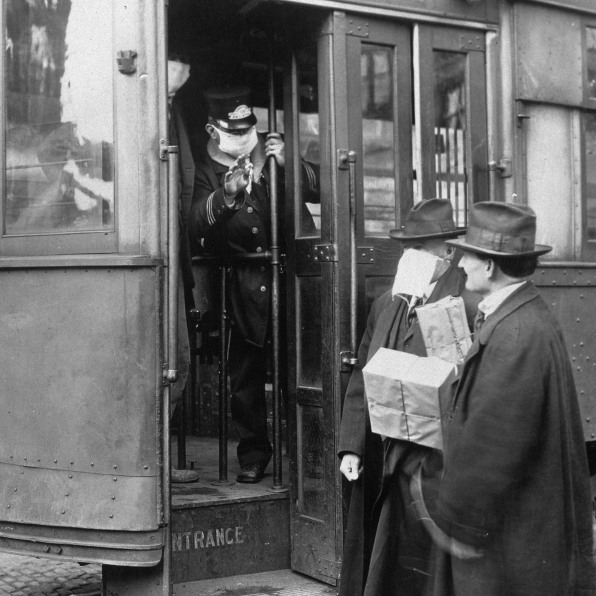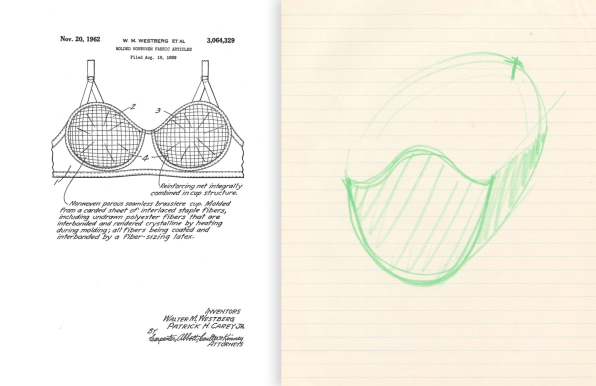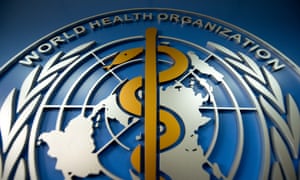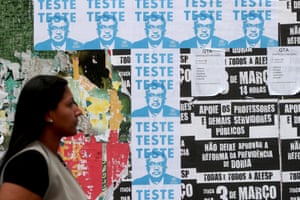Given the WHO’s sprawling structure, vague mandate and reliance on diplomacy, its director general holds immense power to shape it. Even before she took on the role, Brundtland was comfortable on the world stage. “I was already a political leader, and I was used to this kind of authority,” she told me. Like her friend Kofi Annan, the charismatic UN leader, Brundtland believed that international bodies should be prepared to lead when necessary, rather than being bossed around by powerful nations. “If the job is to direct and coordinate global health, it’s not a question of what one or several governments ask you to do,” she said. “We are working for humanity.”
Brundtland pushed the WHO to use its local contacts, diplomatic channels and the emerging internet to locate potential outbreaks, all of which made the organisation less reliant on national governments for information. Within just a few years, this strategy proved its worth. In November 2002, when the Chinese government became aware of the first cases of a novel respiratory disease, later named Sars, it failed to alert the WHO. But, as part of Brundtland’s new approach, WHO staff were monitoring Chinese medical message boards and news media anyway, and were aware of what was then thought to be an atypical pneumonia outbreak. Adding to their suspicions, on 10 February 2003, David Heymann, who was then executive director of the WHO’s communicable diseases cluster, received an email from the son of a former WHO staff member in China warning of a “strange contagious disease” that had already killed 100 people, but which was “not allowed to be made known to the public”. The WHO took the information it had to China, which made its first official report to the WHO the next day.
Although the WHO had no formal powers to monitor and censure its members, Brundtland wasn’t shy about doing so anyway. In the ensuing months she would accuse China of withholding information, claiming that the outbreak might have been contained “if the WHO had been able to help at an earlier stage” and exhorting the Chinese to “let us come in as quickly as possible!” With remarkable speed, China fell in line and shared its data with the WHO. “After her statements to China, no other countries hesitated,” said Heymann.
In March 2003, as the disease spread – reaching Hong Kong, Vietnam and then Canada – for the first time in its history, the WHO issued advice against travelling to affected areas. (Before then, the decision to advise on travel had always been left up to member states.) Despite having no formal powers to ground planes, the measures worked. “Passengers and flights dropped dramatically as soon as we issued the recommendations,” said Heymann.
Brundtland’s approach was not always popular, and some bridled under this new upstart WHO. “It wasn’t just China,” Brundtland told me. “The mayor of Toronto [Mel Lastman] flew to Geneva to tell us take down the travel recommendation – while at the same time he was not containing the outbreak. He had people with Sars riding around the subway, no contact tracing, no following up. He couldn’t accept we were telling him what to do!”
The WHO’s response to Sars was considered a huge success. Fewer than 1,000 people worldwide died of the disease, despite it reaching a total of 26 countries. The pandemic was defeated not with vaccines or medicines, but with NPIs, or “non-pharmaceutical interventions” in WHO parlance: travel warnings, tracking, testing and isolating cases, and a huge information-gathering operation across multiple countries, all made possible by the WHO’s willingness to wield authority that it had, in a sense, created simply by speaking it into existence. “Brundtland did things the WHO had no authority doing. She just did them,” said Fidler. “She sort of used Sars as a way to test drive some very radical changes.”
“After Sars, the WHO’s position was essentially: that was great, let’s formalise it,” said Clare Wenham, a professor of global health policy at LSE. In 2005, the WHO drew up a new version of the International Health Regulations (IHR), the central legal document that all member states are bound by. According to Fidler, the updated IHR, which is in force to this day, is a radical document. It asks its members to prepare for public health threats according to standards set by the WHO, and to report any outbreaks and all subsequent developments. It also allows the WHO to declare a public health emergency of international concern (or PHEIC, pronounced, incredibly, “fake”), using its own information, over the objection of any single country. During an emergency, countries are expected to take the lead from the WHO’s guidelines and report any deviations to the organisation. All of these requirements, bar the reporting of outbreaks, were new.
But the document stopped short of giving the WHO real power if states refuse to comply. “The WHO isn’t Nato, it’s not the security council,” said Gian Luca Burci, who was the WHO’s legal counsel until 2018. The US, fixated on bioterrorism after 9/11, supported giving the organisation some extended powers, but was opposed by Brazil, Russia, India and China, which were wary of US influence. There was a general reluctance to hand an international organisation any more power. “WHO members were happy with the actions that were taken during Sars, but there was definitely a sense afterward of ‘What if that was us in China’s spot?’,” explained Catherine Worsnop, a professor at the University of Maryland School of Public Policy. In short: thanks for stopping the pandemic, but we don’t want to be told what to do.
If the WHO has seemed at times weak or tentative – very un-Brundtland-like – in its handling of the coronavirus crisis, it is partly because of its bruising experiences during the past decade. From 2009 onwards, the WHO faced condemnation from the press and the international community for its handling of successive crises, all during a decade when the financial and diplomatic order that sustained it began to break down.
First, there was the outbreak of H1N1, or “swine flu”. The novel influenza virus was discovered in Mexico in March 2009, and by June, when the WHO declared a pandemic, there were more than 28,000 cases in 74 countries. Over the next year, the WHO coordinated the global response – less aggressively than during Sars – and on 10 August 2010, it declared the pandemic over. Almost immediately, the WHO’s approach came under scrutiny. The death toll – 18,500 confirmed deaths worldwide – was far lower than initially expected, particularly given the disease reached more than 200 countries. “Suddenly you have people saying: ‘Wait a minute, you really cried wolf on this,’” says Wenham. The media and several prominent European politicians demanded inquiries as to whether the WHO had mistakenly rung the alarm, and “cost huge amounts of money and frightened people unnecessarily”, as Paul Flynn, the former Labour MP who chaired one of the inquiries, told the Times in 2010.
To this day, opinions are split as to whether H1N1 was a crisis headed off, or a false alarm. “The WHO is always at risk of being criticised as doing too much or too little,” said Keiji Fukuda, the former WHO assistant director general who led the H1N1 response. Most of the former WHO staff and academics I spoke with agreed, proposing some version of the following as an iron law of public health: act slowly and you will be criticised for failing to stop preventable deaths; act aggressively and stop an outbreak before it becomes serious, and you will be accused of having overreacted. (After all, in the latter case, nothing too bad happened, so what was the big deal in the first place?)
Fidler, who largely approves of WHO’s quick action during H1N1, believes that the backlash led the WHO, which was then under the command of director general Margaret Chan, to become too tentative about calling for action in the future. This was a period when the fallout from the 2008 financial crisis was also starting to take its toll on its budget. “There was a big funding shortfall,” said Andrew Cassels, director of strategy at the WHO between 2008 and 2013. “Cuts made to the emergency response programmes, personnel cuts.” The funding gap stood at nearly $300m in 2012. Entire offices were shut, including a team of social scientists working on pandemic response.
When the Ebola outbreak struck west Africa in 2014, the combination of the WHO’s greater caution and reduced budget resulted in disaster. In contrast to the previous pandemic, this time the WHO was slow to act, and was widely perceived to have lost control of the situation. In the end, the US and several other nations deployed more than 5,000 military personnel at the request of the affected countries, and an ad-hoc UN committee was created to take over responsibilities from the WHO. The outbreak eventually killed 11,310 people, the vast majority in just three countries – Guinea, Liberia and Sierra Leone – paralysing their health systems for months, and causing panic across the world. Prominent scientists judged the WHO’s response an “egregious failure”.
Much of the blame fell on Chan herself. She appeared shell-shocked, stressing to the press that the WHO was a technical advisory body, and that it was national governments that had ultimate responsibility for their citizens’ health. “She wanted the WHO to be an apolitical agency – more like technical support. There was a hesitancy there to push the full powers of the WHO,” said Sara Davies, a professor of global health at Griffith University in Australia.
The bold, proactive culture established after Sars had seemingly faded. Fidler believes that by delaying calling Ebola an emergency, and thus failing to organise an international response at a crucial moment, the WHO’s leadership had shown they “no longer had any faith in their authority”.
Today, under Tedros, the WHO finds itself in uncharted territory. Not only is it facing by far the biggest pandemic in its history, it is also having to defend itself from the nations on which it most depends. “In my 25-plus years of working on global health issues, I cannot recall the leader of a prominent developed country threatening to punish WHO in the manner President Trump did,” said Fidler, referring to the recent press conference in which Trump suggested putting “a very powerful hold” on US contributions to the WHO. In the same press conference, Trump accused the WHO of concealing information, being too slow to react to the virus, and, above all, showing favouritism towards China.
Since the crisis began, Tedros has been repeatedly accused of being soft on China. Senator Marco Rubio recently told Fox News that the Chinese government had “used the WHO to mislead the world”, and claimed that the WHO “is either complicit or dangerously incompetent”. The US senator Rick Scott put it more bluntly, accusing the WHO of “helping Communist China cover up a global pandemic”. (Tedros, meanwhile, has warned of the dangers of politicising the virus.)
Until very recently, the WHO was seen as a relatively neutral arena for China to extend its power. “China likes to find ways within the global system to give it a leading and benevolent image. The WHO was an uncontroversial place to do it,” said Rana Mitter, the director of the University of Oxford China Centre. No longer. The extent of the initial coverup is still unclear, but there is no question that at least at the local level, Chinese officials knew about the outbreak of a novel disease for weeks before it was reported to the WHO. During that time, Chinese doctors were prevented from speaking out.
John MacKenzie, the WHO’s emergency committee adviser, told me that the organisation was “a little misled” about the Wuhan outbreak. He says that by the time the government alerted the WHO on 31 December, scientists in China had already determined via genome sequencing that the outbreak was caused by coronavirus. Yet the government didn’t confirm that until 7 January and the full genome sequence was not officially shared until 12 January. “That’s very slow,” MacKenzie told me. “For at least two weeks, we could have been making far more kits and so on for testing.” MacKenzie added that the number of cases officially declared by the Chinese in the first week – 59 in the week ending 5 January – was “nowhere near as many cases as you’d expect”. (The statistics released by the Chinese government continue to be questioned, with some reports suggesting they may have seriously understated the number of coronavirus deaths.)
Despite mounting frustrations – in mid-January, China also refused the WHO’s request to send a team of scientific observers to Hubei province, the centre of the outbreak – Tedros has never come close to doing what Brundtland did and calling China out. Instead, on 28 January, he had a closed-door meeting with Xi Jinping in Beijing, and two days later, he praised Chinese efforts to contain the disease, declaring that China is “setting a new standard for outbreak control”. That same day, 30 January, the WHO declared a Pheic, and began issuing prescriptions to countries around the world. On 8 February, China finally allowed WHO observers into the country. For Tedros’s supporters, this was vindication of his strategy of keeping China onside. For his critics, it was too little, too late.
Elected as WHO director general in July 2017, Tedros was supported by a bloc of African and Asian countries, including China, which has considerable influence with those members. (Tedros is himself from Ethiopia, where he served as health minister and then foreign minister between 2005 and 2016.) It was a “really nasty” election, said Davies, in which the powers that have traditionally shaped the WHO, such as the US, UK and Canada, lent their support to one of Tedros’s rivals, the British doctor David Nabarro. During the campaign, Tedros was criticised for having served in a repressive government with a poor human rights record, and one of Nabarro’s backers even accused Tedros of covering up a cholera epidemic during his time as health minister. (Tedros denied the claim, describing it as a “last-minute smear campaign”, while Nabarro told the New York Times that he had never authorised his team to make this accusation against Tedros.) In response, Tedros’s supporters mounted “a collective pushback”, said Davies, against the UK and its allies, eventually winning out. Tedros became the first director general from a so-called developing country since the Brazilian Dr Marcolino Gomes Candau in 1953.
While his background is in politics, Tedros is not forthright or confrontational like Brundtland. In Ethiopia, his political party, the Tigray People’s Liberation Front (TPLF) was mostly comprised of ex-revolutionaries, men that “seemed carved out of a rock”, said Fantu Cheru, a professor at American University and former advisor to the Ethiopian government. Tedros was different – jovial and accessible, said Cheru, and able to make personal connections easily. “He is not very ideological, he believes he can work with anyone,” said Mehari Taddele Maru, a professor at the European University Institute in Florence, Italy. Cheru also sees Tedros as a pragmatist. “He’s not in the Chinese pocket. The Americans in particular wanted to destroy his image. Tedros knows how this game works. You need to have more allies than enemies, and those allies may not have a good track record.”
“I don’t think Tedros did anything previous director generals would not have done,” said Anthony Costello, the director of the UCL Institute for Global Health. “He needed a good relationship with China in order to get in.” Even Lawrence Gostin, who has been a prominent critic of Tedros in the past, told me that “his high praise for China is understandable. He is seeking to coax China into cooperation.” He went on to note, though, that this strategy “does risk the credibility of WHO as an objective agency.”
If the WHO thought it could sacrifice a bit of its credibility – overlooking China’s obvious blunders in December and January in exchange for its compliance in February – and move on, it was mistaken. The argument over China’s influence has been raging for weeks, not least since the government of Taiwan claimed that the WHO had ignored its own early reports of human-to-human transmission of coronavirus as part of a larger history of appeasing China – which has blocked Taiwan from joining the WHO (and the UN) for decades.
Now that Trump, scrambling for an answer to explain why the US now has more cases of coronavirus than any other nation, has alighted upon the WHO and China as his preferred scapegoats, these questions will not go away. “I don’t think we will see the US government cut off funding,” said Fidler. “But what’s happened with this pandemic – with the WHO caught between the US/China rivalry – is not a good omen for the WHO going forward.”
While the focus has been on what happened between China and the WHO in January, in epidemiological terms the crisis has moved on. Covid-19 has spread fastest and furthest in the US and Europe, through the very rich nations that largely fund and staff the WHO. Before the outbreak, the WHO struggled to get these same nations to prepare for future pandemics. Now the pandemic is here, and they are at the centre of the crisis, the WHO has been unable to keep them following its advice.
Richard Horton of the Lancet said that after the WHO declared a public health emergency, “countries, especially western countries, didn’t listen. Or didn’t seek to understand what was actually taking place in China.” On 5 February, the WHO asked for $675m to fund its Coronavirus response through to April. Anthony Costello of UCL said that when he met with Tedros on 4 March, the WHO had received only $1.2m. (Tedros announced last week that the funding goal had finally been reached, around the time the number of worldwide cases passed 1 million.)
Even the decision to declare a pandemic on 13 March – a largely rhetorical distinction, since calling a Pheic already requires WHO members to respond – was calculated to wake its member states up. In the UK the Premier League was still playing games, and the previous week the US had held primary election contests. “They declared a pandemic because countries weren’t taking the advice,” said Adam Kamradt-Scott, a professor of global health at the University of Sydney.
The WHO stresses that the ideal response to the crisis is relatively simple. Individual states should limit public exposure, especially by tracking and tracing all known cases – a strategy that worked in South Korea and appears to be working in Germany. On an international level, states should share scientific information and resources. These are the mantras Tedros goes back to in his briefings: “Test test test” and “solidarity solidarity solidarity”.
But countries have repeatedly ignored WHO advice. In the UK, the response has been erratic, lurching between the WHO’s norms and its own strategies, such as the now-discredited pursuit of “herd immunity”. The US didn’t recommend school closures or avoiding travel until 16 March. In Sweden, restaurants are still open.
Many wealthy nations have not only pursued their own national strategies for public health, but have also withdrawn from the globalised world of diplomacy and trade that they themselves set up. Earlier this year, for instance, the NHS ordered millions of masks from a French company named Valmy SAS. But in early March, the French government requisitioned all masks produced within the country, so the masks never reached Britain. This week, Germany accused the US of seizing a shipment of masks bound for Berlin from a port in Thailand; while Germany previously sent inspectors to the factory of an American company in Jüchen to ensure their medical masks weren’t being exported against government orders.
The WHO is battling against a breakdown in international cooperation that is far beyond its capacity to control. “Governments have retreated to national policies, and this problem predates this crisis,” said Clare Wenham, the health scholar. States have been turning away from international institutions for a long time. The WHO hasn’t driven globalisation in the same way as the WTO or IMF, but in a way it has administered it – quietly promising to take on the outbreaks that arise in an industrialised and interconnected world, and relying on the often unspoken norms of international collaboration that underlie it.
Ironically, it is most needed now, at a time when faith in the other administrators and overseers of the global order are in decline – a trend that Covid-19 only seems to be accelerating. “As it’s gone on, you see the WHO becoming less important,” said Wenham. “No one is thinking about reducing the global numbers, only their own. The WHO is a global force, but people aren’t thinking globally.”




